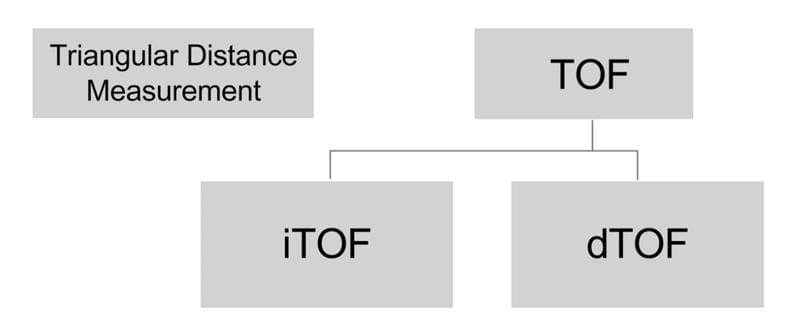LiDAR (Light Detection and Ranging) technology is a cornerstone of modern sensing systems used in everything from autonomous vehicles to factory automation. But not all LiDAR systems are the same. Two primary types dominate the industrial and AIoT landscape today: Time-of-Flight (ToF) and Frequency-Modulated Continuous Wave (FMCW).
Understanding the difference between these two technologies is essential for engineers, system integrators, and decision-makers designing AIoT system solutions.
How ToF LiDAR Works

- Pulsed laser-based
- Simple and well-established technology
- Scalable from 1D to 3D systems
Benefits:
- High accuracy in short-to-medium-range applications
- Lower cost and simpler architecture than FMCW
- Ideal for fast sampling and real-time decision-making
Limitations:
- Signal can degrade in low reflectivity or highly ambient-light environments
- Cannot directly measure velocity of objects
Wiseome’s Mini LiDAR is based on ToF technology. As a 1D LiDAR, it excels at providing precise, low-latency distance measurements in edge-computing environments, making it a strong fit for industrial AIoT, warehouse automation, and AGV navigation.
Related Reading:
How FMCW LiDAR Works
Frequency-Modulated Continuous Wave (FMCW) LiDAR operates by emitting a continuous laser beam whose frequency changes over time (modulated). It calculates both distance and velocity by measuring the frequency shift between the emitted and returned signal—similar to how radar works.
Key Features:
- Uses modulated continuous wave lasers
- Simultaneously measures range and velocity (Doppler shift)
- More complex architecture and signal processing
Benefits:
- Superior at detecting moving objects with high precision
- Greater resilience to sunlight interference and multi-path reflections
- Better performance in cluttered or dynamic environments
Limitations:
- Higher cost and complexity
- Typically requires more power and processing resources
- Less common in compact or battery-powered industrial systems
While both ToF and FMCW LiDAR technologies serve valuable purposes, the choice depends on application requirements, cost constraints, and form factor limitations. For most industrial AIoT systems, ToF LiDAR—especially in 1D format like Wiseome’s Mini LiDAR—is more than sufficient, offering precise, fast, and cost-effective measurement in compact devices.
If your use case requires velocity tracking or advanced perception in complex outdoor environments, FMCW may be a better fit—but with added complexity and cost.
Still unsure?
Get in touch with our team for a consultation
